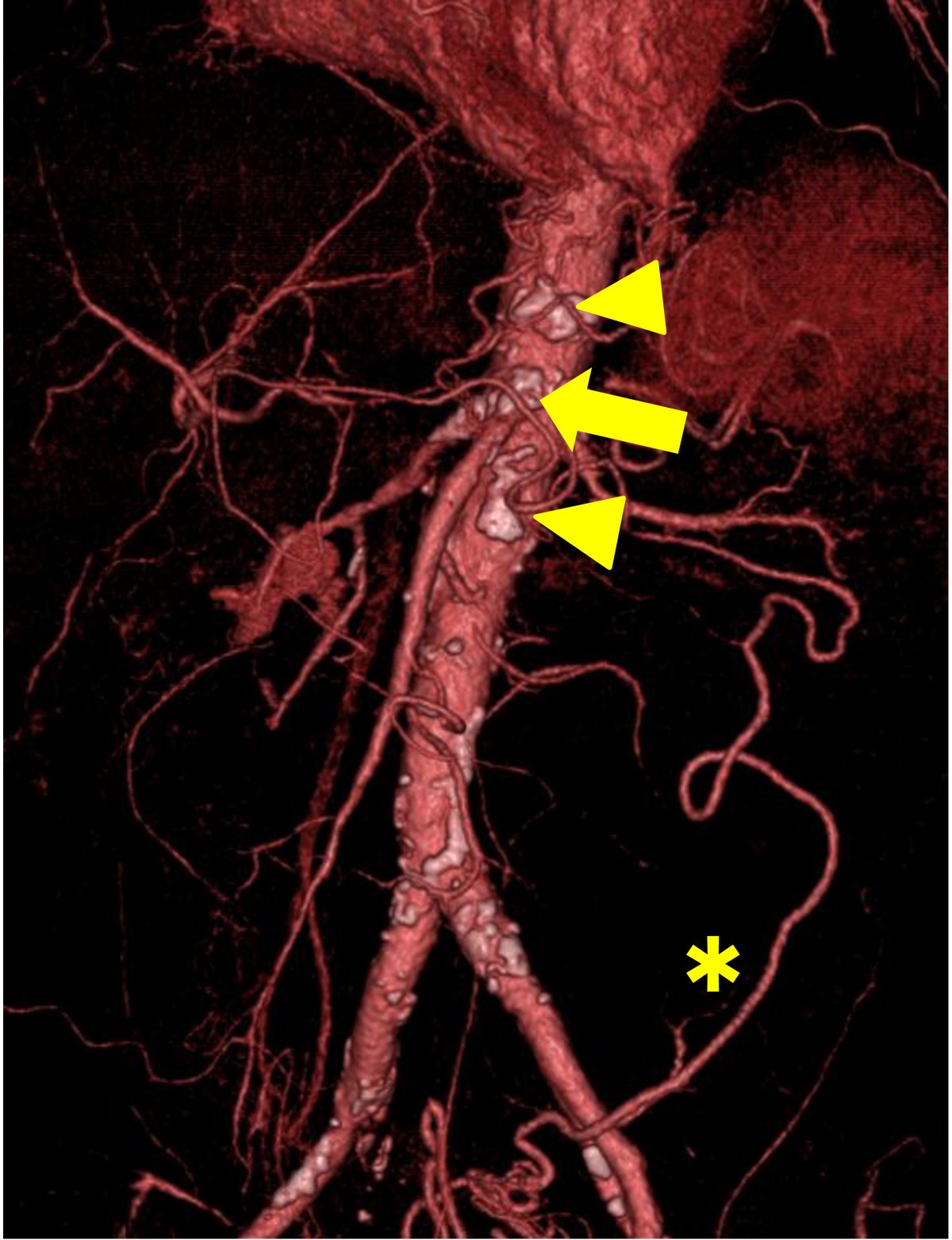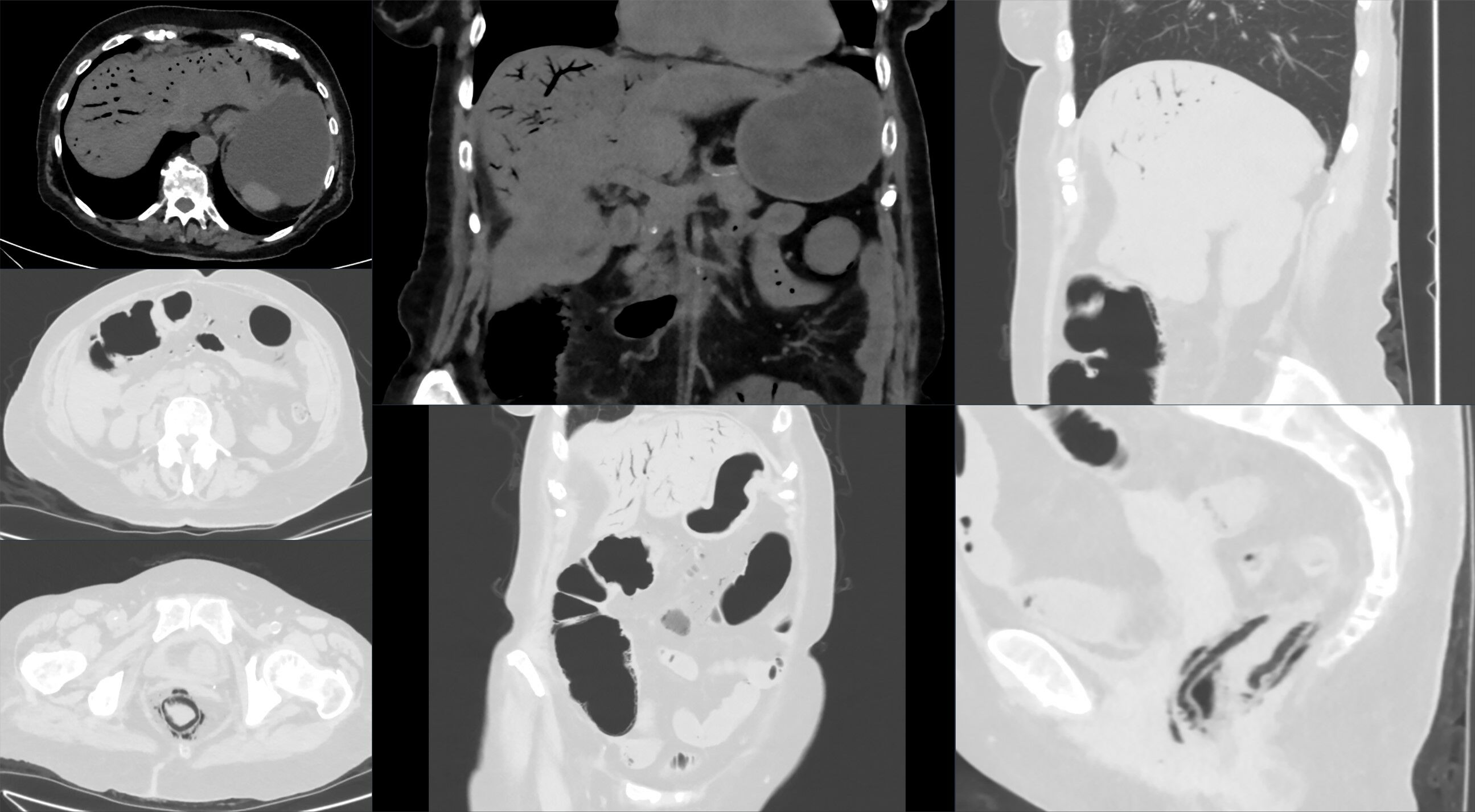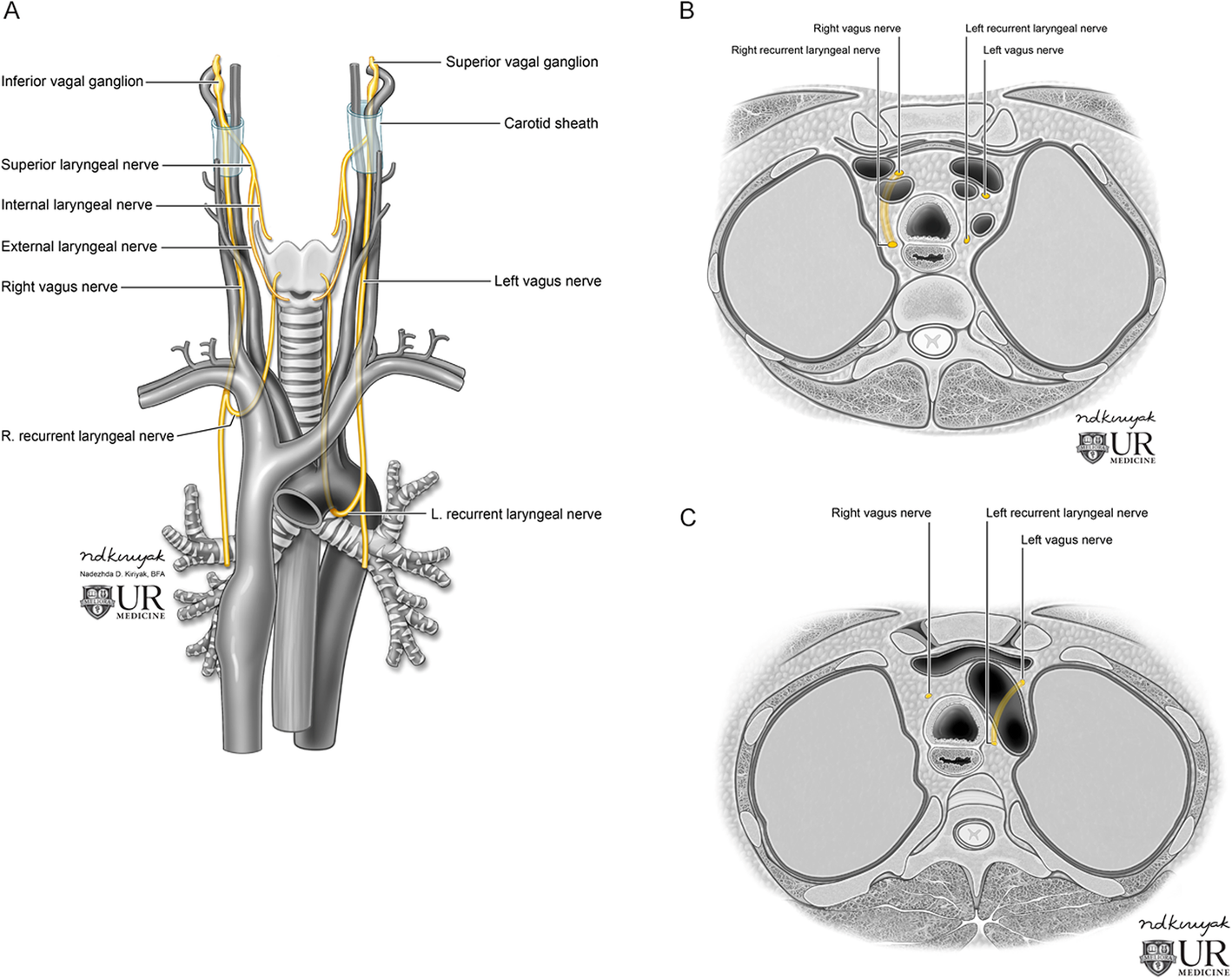Ortner-Syndrom 2 - chronische mesenteriale Ischämie


 nicht verwechseln mit: Ortner-Syndrom 1 - cardiovokales Syndrom
nicht verwechseln mit: Ortner-Syndrom 1 - cardiovokales SyndromChronic mesenteric ischemia, also known as intestinal angina, is an uncommon type of intestinal ischemia usually affecting elderly patients as a result of significant stenosis of two or more mesenteric arteries.
Epidemiology
Normally seen in patients older than 60 years of age and is three times more common in women.
Risk factors
- current or previous tobacco smoking
Clinical presentation
Reported features include:
- postprandial abdominal pain (classically starts 15-30 minutes post-meal and typically lasts for 30 minutes)
- significant weight loss
- food fear
- nausea
- vomiting
- diarrhea
Pathology
Chronic mesenteric ischemia is often multifactorial in etiology. The most common cause is atherosclerosis involving the proximal portions of the celiac artery, superior mesenteric artery (SMA), or inferior mesenteric artery (IMA). Less common etiologies include :
- dissection
- vasculitis, e.g. Buerger disease, Takayasu arteritis
- fibromuscular dysplasia
- radiation
- cocaine abuse
Chronicity of the symptoms is caused by the gradual decrease in blood flow to the intestines. The normal vascular supply to the bowel is from the celiac artery, superior mesenteric and inferior mesenteric arteries. Extensive collateralization can occur between the vascular territories of these vessels. Because of this collateral circulation, patients may experience symptoms, not until two or three major mesenteric vessels are involved.
Associations
In ~50% of patients, peripheral vascular disease or coronary artery disease is reported .
Radiographic features
Ultrasound
Ultrasound can be useful for diagnosing a haemodynamically significant stenosis involving the celiac artery or SMA.
Fasting duplex criteria for significant mesenteric stenosis suggest that a superior mesenteric artery peak systolic velocity of ≥275 cm/s and a celiac artery peak systolic velocity of ≥200 cm/s are reliable indicators of a ≥70% stenosis .
CT
Typical findings include:
- stenosis of mesenteric vessels
- bowel wall thickening
- pneumatosis
- peritoneal free fluid
- extensive collateral vessels
- 3D imaging may help in visualization of collateral pathways
MRI
Helps in visualizing mesenteric vessel stenosis. The inferior mesenteric artery may be poorly visualized, depending on the sequence.
Angiography (DSA)
Catheter angiography is the gold standard for diagnosing mesenteric vascular disease. Not only does it directly visualizes the mesenteric vasculature, selective catheterization and pressure measurements across a stenosis can determine the hemodynamic significance of the questionable lesions.
Treatment and prognosis
If a diagnosis of chronic mesenteric ischemia is made, patients should undergo definitive treatment due to the risk of continued weight loss, acute infarction, perforation, sepsis, or death.
Medical treatment is usually reserved for patients who are not healthy enough to be treated, either surgically or endovascularly. The treatment consists of long-term anticoagulation, such as warfarin.
An open surgical repair includes a transaortic endarterectomy, direct reimplantation on the aorta, or antegrade or retrograde bypass grafting.
Endovascular repair includes angioplasty and/or stent placement of lesions within the mesenteric vasculature.
Differential diagnosis
Possible considerations include:
- acute mesenteric ischemia
- retroperitoneal or coeliomesenteric malignancy
- median arcuate ligament syndrome
- non-occlusive vascular lesions (e.g. aneurysms and dissections)
History and etymology
It was first described as “abdominal angina” by G H Goodman.
Siehe auch:
- Mesenterialinfarkt
- superior mesenteric artery occlusion
- Ortner-Syndrom 1 - cardiovokales Syndrom
- mesenteric artery stenting for chronic mesenteric ischemia
und weiter:

 Assoziationen und Differentialdiagnosen zu chronische mesenteriale Ischämie:
Assoziationen und Differentialdiagnosen zu chronische mesenteriale Ischämie:

